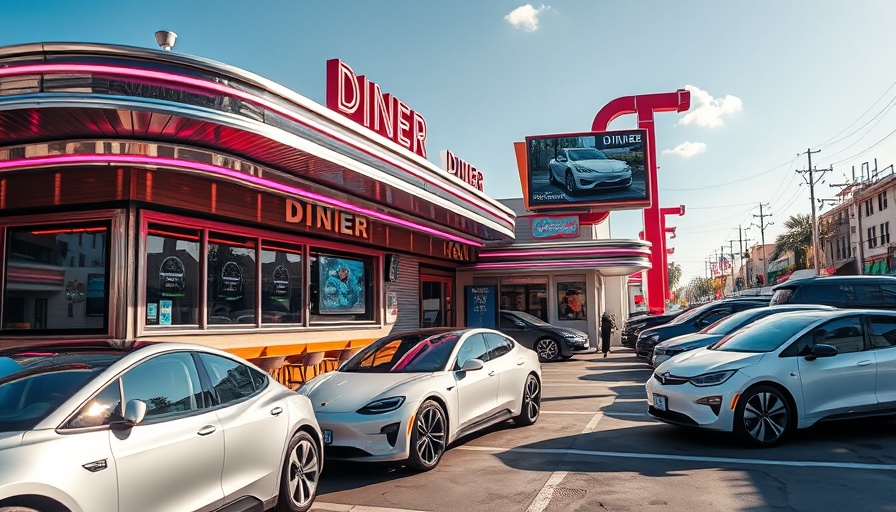
Unlocking the Future: Tesla's Diner Revolutionizes Dining and Charging
In a blend of nostalgia and innovation, Tesla’s newly opened diner, strategically located in Hollywood, isn’t just giving a nod to the past but also reshaping the future of fast food and electric vehicle (EV) charging. Officially launched on July 21, 2025, at 4:20 PM, the Tesla Diner & Drive-In aims to create a unique experience where guests can charge their Teslas while savoring classic diner fare, including hamburgers and hot dogs.
Why This Diner Matters: A Hub of Technology and Experience
Packing dynamic features like 80 v4 Supercharger stalls and an innovative drive-in movie setup that allows for synchronized audio inside Tesla vehicles, this diner isn't merely about food; it’s about creating a community hub for tech enthusiasts and casual diners alike. The integration of dining and charging encapsulates the essence of Tesla's mission: to enhance convenience while maintaining a futuristic outlook.
More than a Diner: Elon Musk's Vision for Global Expansion
As the crowds gathered opening day, CEO Elon Musk hinted at a larger goal. His vision is for Tesla to expand the diner concept to major cities globally, enhancing their presence where EV charging is necessary. Musk tweeted, “If our retro-futuristic diner turns out well, @Tesla will establish these in major cities around the world, as well as at Supercharger sites on long distance routes.” This aligns with the growing fight for the future of transportation, where convenience and sustainability are at the forefront.
Impacts on Next-Gen Technology Trends
The launch of Tesla's diner coincides with the rise of tech innovations driving transformations across industries. Consider this: as more people adopt electric vehicles, the need for integrated services like charging stations equipped with pleasantries such as dining options will only grow. This marries the concepts of future technology and consumer needs, hinting at the emerging tech trends to watch in 2025.
Conclusion: The Next Big Tech Trend?
Will Tesla’s embarkation into the food service industry mark a significant point in the evolution of dining and electric vehicle infrastructure? This retro-futuristic diner, with its blend of classic Americana and cutting-edge technology, certainly opens a dialogue about future directions for tech and lifestyle integrations. For those intrigued by transformational ideas and innovations, following Tesla’s journey could unveil some of the next big tech trends of our time.
 Add Row
Add Row  Add
Add 




Write A Comment